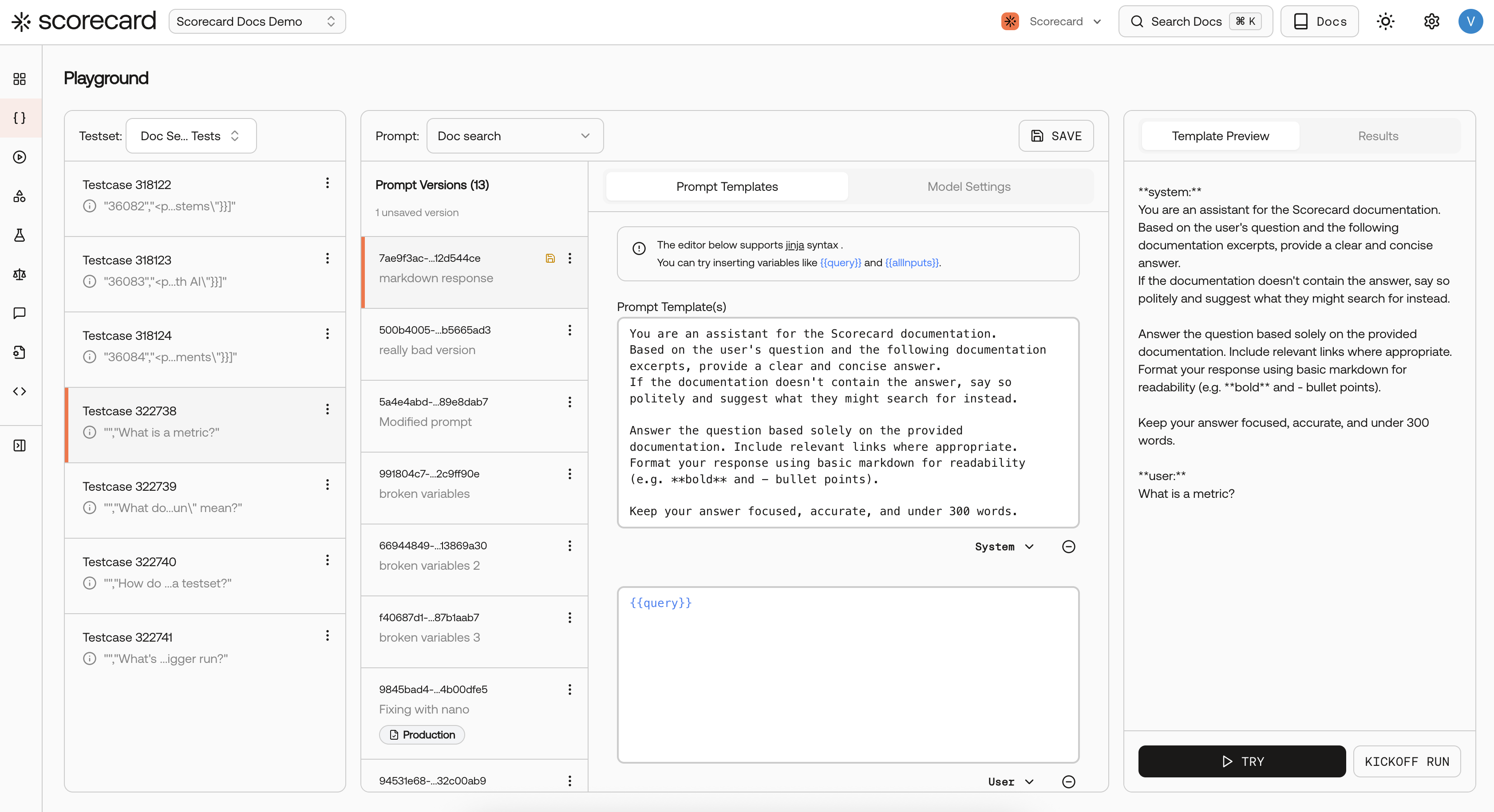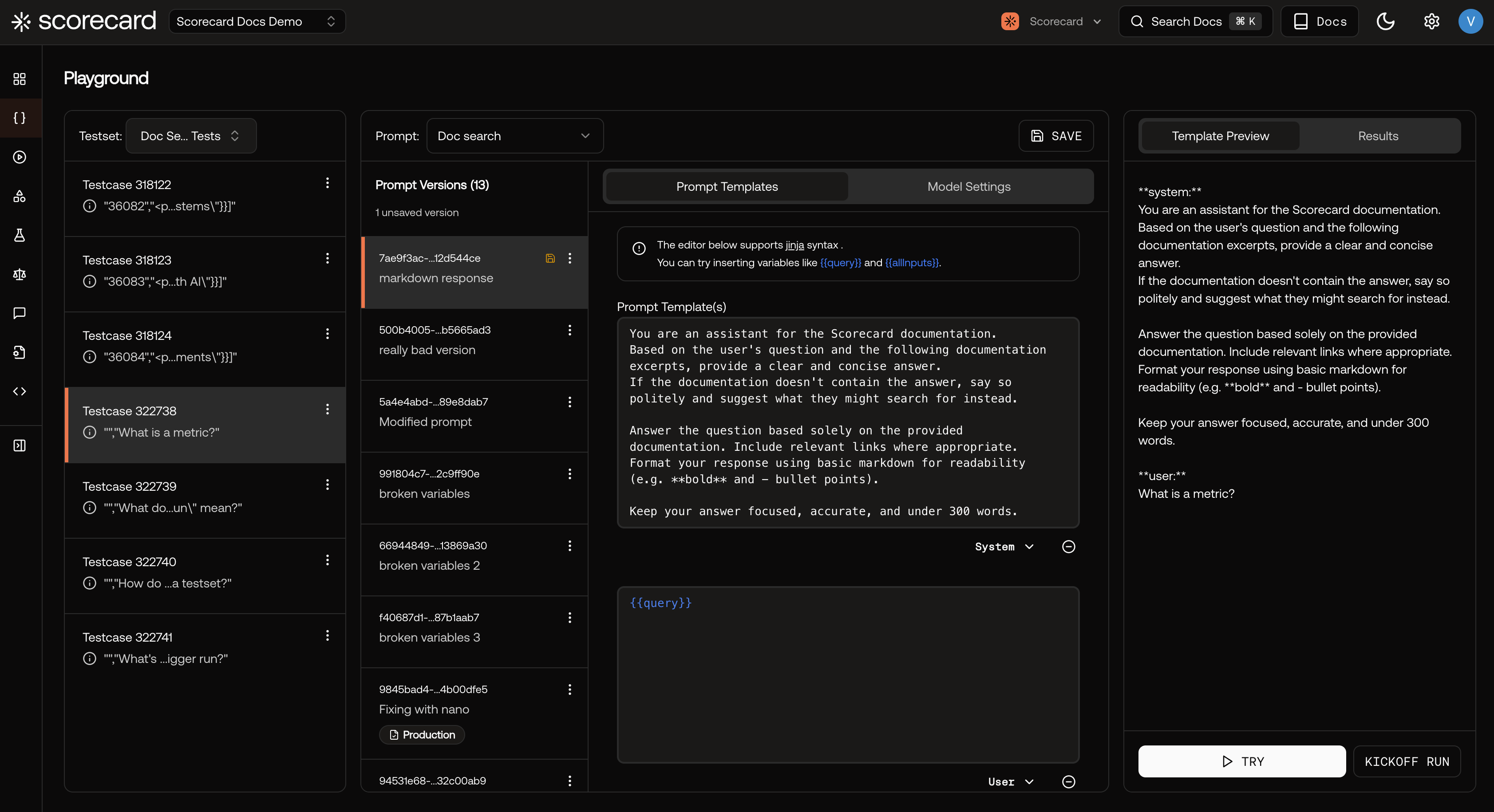

Playground overview.
Getting Started
1. Select Your Test Data (Left Panel)
Choose a Testset:- Click the testset dropdown at the top of the left panel
- Select a testset that contains the data you want to test your prompt against
- If no testsets exist, click “Create testset” to create one directly from the Playground
- The first testcase will be automatically selected
- Click on individual testcases to select them
- Hold Shift and click to select multiple testcases
- Selected testcases have a blue left border
- Hover over the info icon to see the full testcase data
- Testcases with a green flask icon have been tested
2. Edit Your Prompt (Middle Panel)
Choose a Prompt:- Select a prompt from the dropdown in the header
- If no prompts exist, click “Create prompt” to create one directly from the Playground
- The left sidebar shows all versions of your selected prompt
- Click any version to switch to it
- Versions with unsaved changes show a save indicator
- The production version is marked with a badge
- Use the “Prompt Templates” tab to write your prompts
- The editor supports Jinja syntax for dynamic content
- Insert variables from your testcase data like
{{variable_name}} - Add multiple messages by clicking ”+ Add Message”
- Set message roles (System, User, Assistant) using the dropdown
- Remove messages with the trash can icon
- Switch to the “Model Settings” tab
- Choose your AI model (GPT-4, Claude, etc.)
- Adjust parameters like temperature, max tokens, and top-p
- These settings affect how the AI generates responses
3. Preview and Test (Right Panel)
Template Preview:- The “Template Preview” tab shows how your prompt looks with real data
- Variables are automatically replaced with values from selected testcases
- This helps you verify your Jinja templating is working correctly
- Click “Try” to test your prompt on selected testcases
- Click “Kickoff Run” to create a full run for the entire testset, which will appear in your run history
- Results appear in the “Results” tab automatically
- The “Results” tab shows AI responses for each testcase
- See response time, token count, and full output
- Click the completion badge to open a detailed results modal
- Green indicates successful completion, yellow shows partial results
Key Features
Jinja Templating
Your prompts support Jinja syntax for dynamic content:Multi-testcase Testing
- Test individual testcases for quick iteration
- Run all testcases for comprehensive evaluation
- Kickoff full runs that are tracked in your run history
- Compare results across different prompt versions
Version Management
- Save new versions of your prompts with the “Save” button
- Switch between versions to compare performance
- Publish versions to production when ready
Real-time Preview
- See exactly how your prompt will look with real data
- Catch templating errors before running tests
- Understand how variables are populated
Best Practices
- Start Small: Select one testcase first to quickly iterate on your prompt
- Use Variables: Leverage Jinja templating to make prompts dynamic and reusable
- Test Thoroughly: Run all testcases before publishing to production
- Save Versions: Create new versions when making significant changes
- Monitor Results: Check response times and token usage to optimize costs